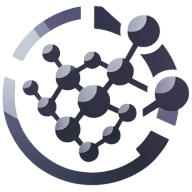How Nanotechnology is Improving Drug Delivery Systems: 6 Advantages
In the realm of modern medicine, nanotechnology is a game-changer, particularly in enhancing drug delivery systems. It offers unprecedented precision, improving treatment outcomes while minimizing side effects. From targeting tuberculosis to crossing biological barriers, discover the transformative advantages of nanoscale solutions in healthcare.
- Nanoparticles Revolutionize TB Drug Delivery
- Targeted Nanotech Enhances Treatment Precision
- Nanotech Boosts Absorption of Poorly Soluble Drugs
- Precise Dosing Reduces Medication Side Effects
- Nanocarriers Shield Sensitive Drugs During Delivery
- Nanoparticles Overcome Biological Barriers in Treatment
Nanoparticles Revolutionize TB Drug Delivery
Nanotechnology is making a big impact on how we deliver medications, especially for diseases like tuberculosis (TB). One example is the use of nanoparticles to carry and release anti-TB drugs in a controlled way. These tiny drug carriers improve how well the medicine is absorbed by the body and allow for slower, sustained drug release. This means patients don't have to take their medication as often, which can help with adherence to treatment. TB requires a strict, months-long drug regimen, and many patients struggle to stick with it. With nanoparticles, the burden of frequent dosing is reduced, making treatment more manageable.
The advantages of using nanomaterials in drug delivery are significant. Nanoparticles can carry both water-soluble and fat-soluble drugs, making them more versatile than traditional drug forms. They can be taken in different ways, including inhalation or oral administration, which gives doctors more options when prescribing treatment. Another key benefit is their stability--these drug carriers have a longer shelf life, which is particularly useful in areas where medical supplies are limited. Since TB remains a major issue in developing countries, better drug stability and controlled release can make a real difference.
In my experience working with businesses that rely on secure, efficient systems, I've seen how the right technology can solve big challenges. The same applies to healthcare. When a solution makes treatment simpler and more accessible, it improves outcomes. Nanotechnology in drug delivery is doing just that. It's not just about making medicine more effective--it's about making it easier for people to get the treatment they need and stick with it.

Targeted Nanotech Enhances Treatment Precision
Nanotechnology has revolutionized drug delivery systems by enhancing the targeting of specific cells or tissues. This breakthrough allows medicines to reach their intended destinations more accurately, increasing the effectiveness of treatments. By using tiny particles, drugs can be guided to problem areas in the body with greater precision.
This targeted approach reduces the amount of medication needed and minimizes impacts on healthy cells. As a result, patients may experience better outcomes with fewer unwanted effects. Medical professionals should explore how nanotechnology can improve their current treatment methods for various conditions.
Nanotech Boosts Absorption of Poorly Soluble Drugs
The use of nanotechnology in drug delivery has significantly increased the bioavailability of poorly soluble drugs. This means that medications that were once difficult for the body to absorb can now be more easily used. By breaking down drugs into extremely small particles, they become more easily dissolved and absorbed by the body.
This improved absorption leads to better effectiveness of medications, even at lower doses. Patients may benefit from reduced medication amounts while still achieving desired results. Healthcare providers should consider nanotech solutions for patients who struggle with hard-to-absorb medications.
Precise Dosing Reduces Medication Side Effects
Nanotechnology in drug delivery systems has made great strides in reducing side effects through precise dosing. By using tiny carriers, medications can be released in exact amounts over time. This controlled release helps maintain steady drug levels in the body, avoiding sudden spikes or drops that often cause side effects.
Patients may experience fewer unwanted reactions while still getting the full benefits of their medication. The precision offered by nanotech delivery can make treatments more comfortable and manageable for many people. Doctors should look into nanotech options for patients who are sensitive to medication side effects.
Nanocarriers Shield Sensitive Drugs During Delivery
Protecting sensitive drugs from breaking down too quickly is another advantage of nanotechnology in drug delivery. Some medicines are easily damaged by the body's environment before they can do their job. Nanotech carriers act like tiny shields, keeping these delicate drugs safe as they travel through the body.
This protection allows medicines to remain effective for longer periods, potentially reducing the frequency of doses needed. Patients might find their treatments more convenient and effective with this approach. Researchers should continue developing nanotech solutions to extend the life of sensitive medications in the body.
Nanoparticles Overcome Biological Barriers in Treatment
Nanotechnology has improved drug delivery systems by enabling medications to cross biological barriers more effectively. The body has many natural defenses that can block drugs from reaching their targets. Nanoparticles are so small that they can slip past these barriers, carrying medicine to places that were once hard to reach.
This ability opens up new possibilities for treating conditions in protected areas of the body, such as the brain. Improved delivery across barriers could lead to breakthroughs in treating complex diseases. Medical teams should investigate how nanotech delivery might help patients with conditions that are difficult to treat due to biological barriers.

